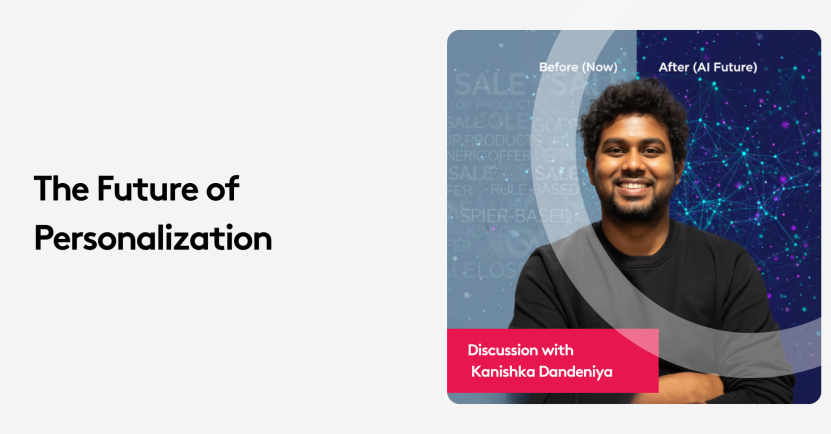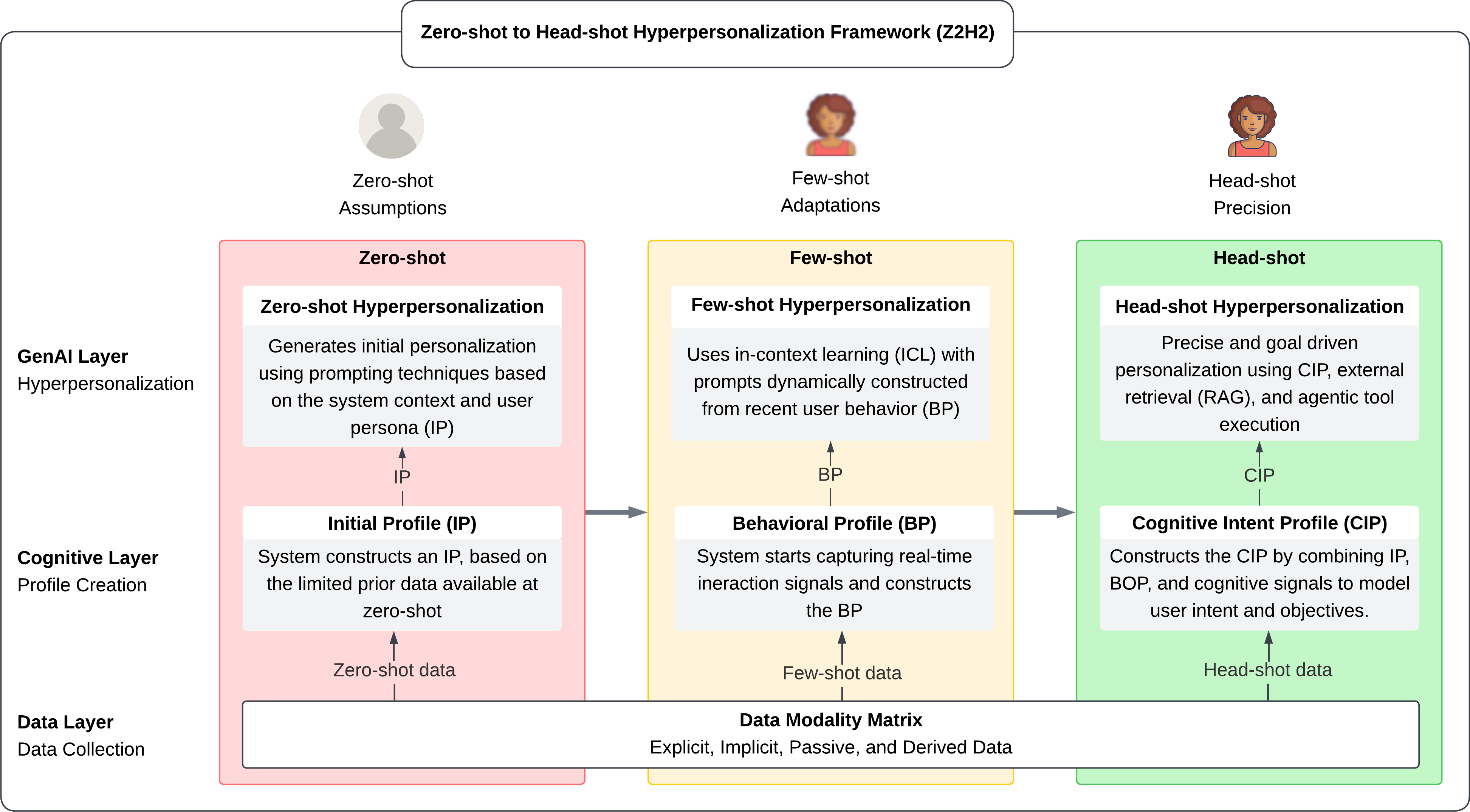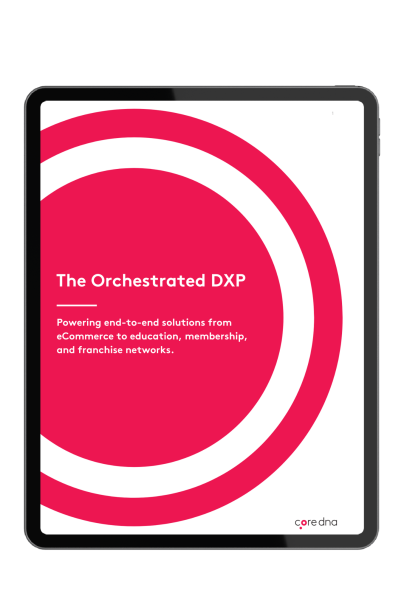The Future of Personalization: Discussion with Kanishka Dandeniya

Personalization is everywhere. From Netflix recommendations to targeted ads that eerily know what you were browsing, it’s baked into almost every digital experience. But here is the catch: most of it still feels underwhelming.
Why? Because these recommendations are based on rules predetermined by a marketing team that is trying to reach its KPIs rather than make sure you get what you want and need.
Today's personalization platforms are still largely rule-based and reactive. It nudges you toward the “next best product,” but often overwhelms you with noise instead of clarity.
This is why we decided to push the boundaries of what is possible in collaboration with La Trobe University, Daswin De Silva, Professor of AI and Analytics, and Kanishka Dandeniya, an industry PhD AI researcher.
Together we are exploring what we call hyper-personalization, an approach that’s dynamic, behavioral, and objective-aligned.
Key takeaways
- Most personalization today is still underwhelming. It’s rule-based and reactive, relying on static profiles or segments that don’t adapt as people’s needs change.
- The Z2H2 framework makes personalization always possible with Zero-shot (no prior data, just context), Few-shot (quick learning from early interactions), and Head-shot (deep, multi-channel profiles), relevance is delivered at every stage of the customer journey.
- AI is becoming the core engine of personalization powering predictive intelligence, continuous adaptation mid-session, and memory across time, turning personalization from guesswork into a relationship.
- Objective Alignment is the key to trust. Instead of optimizing only for clicks and conversions, hyper-personalization must balance business goals with what’s valuable for the user. This win-win strategy creates sustainable engagement.
- Core dna bridges research and practice. Core dna’s orchestration-first platform gives companies practical access to hyper-personalization today.
On this page:
The Z2H2 Personalization Framework by Kanishka Dandeniya: Painting a Live Portrait of Your Visitor
When I sat down with Kanishka, I wanted to cut through the noise and really understand where personalization is heading. Kanishka is working closely with Sam Saltis, our CEO, to help shape the future of hyper-personalization on our platform.
Kanishka’s research builds on Core dna’s foundation to create a hyper-personalization engine that’s dynamic, adaptive, and enduring. The goal is simple: to move beyond rules and static segments into a living system that evolves with people as they change.
The first thing I asked was simple:
What does the landscape look like today, and why do we even need a new approach?
Some brands are doing an awesome job at personalization, we are talking about Google, Netflix, Amazon. These big companies are spending millions on personalization and the results are there to prove its worth.
But for most mid-market ecommerce brands, the personalization engine they have access to are built on static profiles, fixed segments and rule based recommendations.
This creates several limitations. As customers' evolve during their journey, these personalization engine are unable to move fast and adapt which makes it feel clunky and irrelevant.
One thing we are sure of is that people don’t stay the same; their needs and contexts shift daily, sometimes hourly. Traditional marketing locks users into fixed labels. A person browsing pool chemicals in March is not the same person comparing solar heaters in September.
Their intent, context, and needs have shifted. A personalization engine should adapt to those shifts in real time, treating customers like moving targets instead of frozen categories.
That led me to my next question:
So what’s your alternative? How do we move past the segment trap?
“My work focuses on the Z2H2 framework: Zero-shot, Few-shot, and Head-shot personalization. Zero-shot means even when you know nothing about a visitor, you can personalize instantly based on context like device, location, or time.
Few-shot means you adapt quickly after just a few clicks or scrolls. And head-shot is where personalization gets deep, using multi-channel history to anticipate what a customer will need tomorrow, not just today.”
Head-shot is where personalization becomes truly deep, as the system develops a clear understanding of the user’s preferences, goals, and behavioral patterns.
It integrates multi-channel histories and contextual feedback to anticipate what the user will need next, moving from reactive adaptation to proactive intelligence.
My future research on achieving hyperpersonalisation builds upon this theoretical framework. The Z2H2 model serves as a guiding structure for developing systems that progressively evolve from context-based adaptation to continuous, individualized, and predictive human–AI-system interactions."

I loved how simple but powerful this framework is: it means personalization is always possible , whether someone is brand-new, semi-known, or a long-time returning member. From there, our conversation turned toward the future. I asked:
What does hyper-personalization look like if we get it right?
Kanishka painted a picture that stuck with me. Instead of static profiles, you get dynamic personas that evolve continuously.
Personalization becomes lifelong, remembering purchases, surfacing renewals at the right moment, and adapting to life stages. “Instead of a static snapshot,” he said, “you get a living portrait of your customer one that updates every day.”
Kanishka also highlights the need for objective alignment. Most platforms optimize only for clicks or conversions which are business goals.
But true hyper-personalization should balance objectives, aligning what the user wants with what the platform needs. That’s where trust is built, and where personalization becomes sustainable rather than manipulative.
This win-win framing is central to his research, and it’s also what makes it practical for Core dna. Sam, Kanishka, and the team aren’t just writing papers, they’re building toward a hyper-personalization engine inside our orchestration layer.
Every milestone in Kanishka’s PhD is tied to prototypes tested on the Core dna platform, ensuring that theory feeds directly into practice.
I also wanted to know:
How does AI fit into this future. Is it just another tool, or is it the engine?
“AI is really at the center of this. It moves personalization from reactive rules to predictive intelligence, from siloed touchpoints to continuous adaptation, from forgetful campaigns to memory-driven relationships.
But it’s not just about being clever, it’s about objective alignment. True hyper-personalization should serve both sides: what’s valuable to the user and what’s valuable to the business. That’s how you build trust.”
And that’s what excites me most. Hyper-personalization isn’t just an academic exercise or a marketing buzzword. With the Z2H2 framework and our orchestrated, AI-first architecture, we’re laying the foundation for personalization that feels human, adaptive, and enduring.
Most companies have scattered customer data across silos, analytics here, chatbot logs there, emails in another system. The goal with hyper-personalization engine is to stitch these fragments together into a single, evolving profile.
That way, personalization feels coherent across every touchpoint, whether it’s an eCommerce storefront, a support chatbot, or a membership portal.
Because this is an industry PhD, the outcomes aren’t stuck in academic papers. Every milestone produces not only published research, but also prototypes directly integrated into the Core dna platform. Businesses benefit from cutting-edge theory that works in practice. Academia benefits from field-tested results.
You can follow some of Kanishka latest research insights on Linkedin.
How AI is Changing Personalization Platforms
When looking at personalization with a future lens, we need to focus on relationship rather than guesswork. The future of personalization enabled by Agentic AI will help align marketing goals with customer goals and make personalization a 2 way relationship that thrives because of mutual understanding. This means digital experiences will feel more personal and relevant.
For us at Core dna, personalization isn’t just about the next click. The key to unlocking exponential revenue gains from product and content recommendations is the ability to immediately identify intent, then dynamically adapt to those needs both in the moment and across the customer’s lifecycle.
AI turns personalization from a rulebook into a relationship. Core dna makes that relationship possible at scale.
As Kanishka discovered in his research, and as much of today’s academic work confirms, AI sits at the very center of the future of personalization. Zero-shot, few-shot, head-shot, all of these stages depend on AI’s ability to infer intent, learn quickly, and adapt continuously.
But here’s the reality: most businesses aren’t there yet. 67% of companies still lack a unified audience strategy, and nearly half don’t dedicate resources to personalization.
Even when they claim to “use AI,” it’s often surface-level: an image swap, a basic rules engine that triggers a slightly different offer. That’s not hyperpersonalization. That’s just a shinier version of the old playbook.
The real shift comes when AI moves personalization from reactive rules to predictive intelligence.
- Where we are today: Platforms still rely on “if user viewed X, then show Y.” Rules that work in isolation but collapse in complexity.
- Where we’re heading: AI interprets subtle signals, anticipates intent before clicks happen, and begins delivering what’s needed in real time. This is personalization on the go, even in a zero-shot scenario.
Once predictive intelligence is in place, the next leap is continuous, contextual adaptation. Experiences no longer update between campaigns; they adapt mid-session. Banners shift, recommendations evolve, copy reframes itself, all as the system reads what the customer is doing right now.
Then comes memory. The most powerful layer AI unlocks is not just reacting in the moment, but remembering across time. A system that recalls last year’s purchase, anticipates a seasonal need, and adapts as life stages change. This is what transforms personalization from transactional nudges into long-term relationships.
Taken together, predictive intelligence, continuous adaptation, and memory point toward a new paradigm: personalization that is proactive, adaptive, and enduring.
And this is where Core dna stands apart. Many companies talk about AI, but they remain stuck in silos and rules. With our orchestration-first architecture, slim metadata for real-time speed, and transparency for trust, Core dna is building the bridge from today’s fragmented efforts to tomorrow’s hyper-personalization engine.
Building the AI Foundation for Hyperpersonalization
Core dna has already laid the foundation for a more advanced personalization platform. But the real breakthrough is how we’re now bringing Coordinated AI into that foundation.
Most vendors treat AI as a bolt-on. They give you a pre-determined agent or plugin, you ask it for something, and it spits out an answer. That’s not how we see it. At Core dna, AI is woven natively into our orchestration layer, which means it can act across the entire platform, content, commerce, media, and beyond.
Think of it less as a chatbot, and more as a network of micro-services you can spin up on demand.
One example: we recently ran a massive AI-tagging project. We had over 6,000 images that would normally take a team weeks or months to categorize. With AI embedded in the platform, orchestrated to run at scale, the entire job was done in 24 hours. That kind of speed isn’t just convenient, it lays the groundwork for hyper-personalization. Because the more accurate and richly tagged your data is, the more powerful your personalization engine becomes.
We’ve tested this with real customers too. For Frontier Touring, we proposed an AI-driven tagging of concerts to transform how events were organized and surfaced online. What would have been tedious manual work became a new layer of intelligence across their content.

This is why foundation matters. Hyper-personalization depends on data quality and structure. If the inputs are patchy or inconsistent, the outputs will be too.
By using AI and orchestration together, Core dna is building the clean, consistent, and richly structured layer that personalization needs to evolve into its next stage: AI-native personalization.
And this is where Core dna truly differs from the market. We don’t just give you a single agent; we give you the ability to build as many AI micro-services as your business needs.
Each one can handle a different slice of the experience: tagging media, rewriting metadata, re-classifying content, or preparing product bundles. All coordinated, all native, all flexible.
In other words: we’re not waiting for AI to become part of personalization. We’re already using it to prepare the data, orchestrate the workflows, and set the stage for the next era of hyper-personalization.
Personalization has come a long way from basic product recommendations to sophisticated, rule-based journeys. But those approaches are no longer enough. Customers don’t live in static segments, and their needs can’t be captured by rules alone.
The Z2H2 framework makes it clear: personalization must always be possible, whether you know nothing about a visitor or have years of history. AI is the engine that powers this shift, moving experiences from reactive nudges to predictive intelligence, continuous adaptation, and lifelong memory. And critically, hyper-personalization has to be built on objective alignment, balancing business outcomes with user value to build trust.
With our orchestration-first architecture, AI-native micro-services, and industry PhD partnership with Kanishka, we’re turning theory into practice. From tagging 6,000 images in 24 hours to SEO automation and testing prototypes with real customers, we’re laying the foundation for hyper-personalization that’s dynamic, adaptive, and enduring.





